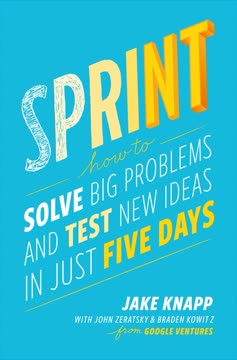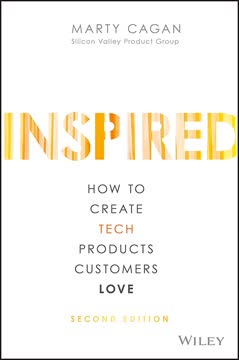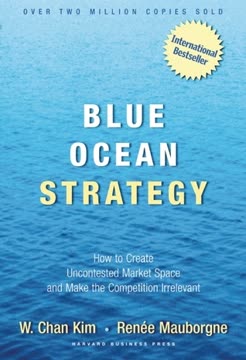重点摘要
1. 设计思维是一种系统化的解决问题和创新的方法
设计思维可以为有机增长和创新做出贡献,就像全面质量管理(TQM)对质量的贡献一样——将我们一直关心的事情变成管理者手中的工具和流程,使其实现。
设计思维揭秘。 设计思维不是魔法,也不仅仅是设计师的专利。它是一种系统化的解决问题的方法,所有管理者都可以使用。它从深刻理解客户开始,为他们创造一个更好的未来,承认第一次尝试可能并不完美。
设计思维的关键原则:
- 同理心:深刻理解客户的需求和体验
- 创新:创造满足这些需求的新颖解决方案
- 迭代:根据反馈和学习不断完善想法
设计思维补充了传统的商业分析,带来了以人为本的创造性方法,帮助管理者超越渐进式改进,创造突破性的增长机会。
2. 设计过程遵循四个关键问题:现状是什么?如果……会怎样?什么令人惊叹?什么有效?
设计从同理心开始,建立对我们设计对象的深刻理解。
四个问题框架。 设计思维过程可以分为四个关键阶段,每个阶段围绕一个重要问题展开:
- 现状是什么?- 探索和理解当前现实
- 如果……会怎样?- 想象新的可能性和替代方案
- 什么令人惊叹?- 确定最有前途的概念
- 什么有效?- 在现实世界中测试和完善想法
这个框架为创新项目提供了清晰的路线图,确保团队在跳到解决方案之前彻底探索问题空间。它平衡了发散思维(生成许多选项)和收敛思维(缩小到最佳想法)。
3. 可视化和旅程映射提供深刻的客户洞察
旅程映射引导你了解客户的当前体验,通过观察和访谈收集的数据来实现。
通过客户的眼睛看世界。 可视化技术帮助团队捕捉和传达关于客户体验的复杂信息。旅程映射尤其是一种强大的工具,可以理解整个客户体验,包括情感的高低起伏。
关键的可视化技术:
- 客户旅程图
- 人物角色
- 同理心地图
- 故事板
- 照片和视频人种学
这些工具帮助团队培养对客户的同理心,识别痛点和机会,并在组织内部有效传达洞察。它们提供了一个共享的理解,为后期的创新思维提供了燃料。
4. 头脑风暴和概念开发产生创新解决方案
创建新概念更多依赖于纪律而非创造力。
结构化的创意生成。 有效的头脑风暴不仅仅是自由形式的创意生成。它需要精心准备,明确的基本规则,以及结构化的方法来捕捉和构建想法。
成功头脑风暴的关键要素:
- 多样化的团队组成
- 明确的问题框架
- 刺激思维的触发问题
- 建立在他人的想法之上
- 初期注重数量而非质量
概念开发将头脑风暴的原始输出转化为连贯的、完整的解决方案概念。这包括将相关想法聚类,识别主题,并结合元素以创建可以根据设计标准评估的强大提案。
5. 假设测试和快速原型设计高效地完善想法
原型设计使用一种可承受的损失计算:学习的价值是什么?
快速且廉价地学习。 假设测试帮助团队识别可能成就或破坏新概念的关键未知因素。通过明确陈述假设并设计实验来测试它们,团队可以在投入大量资源之前快速验证或否定想法。
快速原型设计快速且廉价地将概念变为现实。关键原则包括:
- 从简单开始(例如,纸质原型)
- 专注于学习而非完美
- 根据反馈快速迭代
- 测试具体元素以及整体概念
这种方法允许团队探索多种选项,快速失败,并根据现实世界的反馈完善想法,显著降低后期大规模失败的风险。
6. 客户共创和学习发布验证市场中的概念
任何时候引入一个不熟悉的概念,你都可以预期大部分会出错。这就是为什么使用低成本、低保真原型进行共创如此重要,以减少风险并提高成功创新的速度。
与客户合作。 共创涉及让潜在客户参与新产品的开发。这种协作方法确保解决方案真正满足客户需求,并在过程中早期建立认同感。
学习发布将有前途的概念带入市场进行现实世界的测试。关键原则:
- 设定明确的学习目标
- 预先定义成功指标
- 限制时间、地域或客户群体
- 设计快速反馈循环
- 准备根据结果进行迭代或调整
这些方法弥合了概念和全面发布之间的差距,提供了有价值的数据来指导继续或停止的决策,并在进行重大投资之前完善产品。
7. 实施设计思维需要仔细的团队选择和势头管理
只要项目顺利进行,人们感到富有成效,就会有积极的氛围。势头建设的首要因素是速度。
为成功而构建。 在组织中实施设计思维不仅仅是学习工具和流程。它需要仔细关注团队组成、项目选择和保持势头。
成功实施的关键考虑因素:
- 从小规模、可管理的项目开始
- 选择多样化的跨职能团队
- 获得高层支持
- 创建专用项目空间(“作战室”)
- 建立定期检查和明确的决策流程
- 庆祝小胜利并从失败中学习
通过关注这些要素,组织可以创造一个设计思维蓬勃发展的环境,带来持续的创新和增长。
最后更新日期:
FAQ
What's "Designing for Growth" about?
- Design Thinking for Managers: "Designing for Growth" by Jeanne Liedtka and Tim Ogilvie is a guide for managers on how to apply design thinking to drive business growth.
- Toolkit Approach: The book provides a toolkit of ten design thinking tools that managers can use to innovate and solve complex business problems.
- Structured Process: It outlines a structured process involving four key questions: What is? What if? What wows? and What works? to guide managers through the design thinking journey.
- Practical Examples: The book includes real-world examples and case studies to illustrate how design thinking can be applied in various business contexts.
Why should I read "Designing for Growth"?
- Practical Application: It offers practical tools and methods that managers can directly apply to their work to foster innovation and growth.
- Structured Framework: The book provides a clear, structured framework for implementing design thinking, making it accessible even to those new to the concept.
- Real-World Success Stories: It includes success stories from companies like AARP and Kaiser Permanente, demonstrating the effectiveness of design thinking in real business scenarios.
- Enhance Problem-Solving Skills: Reading this book can enhance your problem-solving skills by teaching you how to approach challenges creatively and strategically.
What are the key takeaways of "Designing for Growth"?
- Four Key Questions: The design thinking process is structured around four questions: What is? What if? What wows? and What works? These guide the exploration, ideation, and implementation phases.
- Ten Essential Tools: The book introduces ten tools, such as journey mapping and rapid prototyping, that are essential for applying design thinking in business.
- Customer-Centric Approach: Emphasizes the importance of understanding customer needs and involving them in the design process to create value.
- Iterative Learning: Encourages an iterative approach to innovation, where assumptions are tested and refined through prototypes and customer feedback.
How does "Designing for Growth" define design thinking?
- Systematic Approach: Design thinking is defined as a systematic approach to problem-solving that starts with understanding customer needs and creating a better future for them.
- Empathy, Invention, Iteration: It involves empathy for the user, invention of new solutions, and iteration to refine those solutions.
- Beyond Aesthetics: The book differentiates design thinking from traditional design by focusing on business growth and problem-solving rather than just aesthetics.
- Accessible to Managers: It argues that design thinking can be taught to managers and applied in business contexts to drive innovation.
What are the four key questions in "Designing for Growth"?
- What is?: This question focuses on understanding the current reality and identifying the real problem or opportunity.
- What if?: This stage involves envisioning new possibilities and generating creative ideas for the future.
- What wows?: Here, the focus is on selecting the most promising ideas that have the potential to create significant value.
- What works?: This final stage involves testing the ideas in the marketplace to see which ones are viable and can be scaled.
What are the ten tools of design thinking in "Designing for Growth"?
- Visualization: Using imagery to envision possibilities and bring them to life.
- Journey Mapping: Assessing the existing experience through the customer's eyes.
- Value Chain Analysis: Evaluating the current value chain that supports the customer's journey.
- Mind Mapping: Generating insights from exploration activities and creating design criteria.
- Brainstorming: Generating new possibilities and alternative business models.
- Concept Development: Assembling innovative elements into a coherent solution.
- Assumption Testing: Isolating and testing key assumptions that will drive success.
- Rapid Prototyping: Expressing a new concept in a tangible form for exploration.
- Customer Co-Creation: Involving customers in creating the solution that best meets their needs.
- Learning Launch: Creating an affordable experiment to test key assumptions with market data.
How does "Designing for Growth" suggest using visualization?
- Mother of All Tools: Visualization is considered a fundamental tool used in every stage of the design thinking process.
- Reduces Misinterpretation: It helps reduce project risk by making ideas tangible and reducing the chances of misinterpretation.
- Engages Right Brain: Visualization engages the right brain, which is responsible for emotion and intuition, aiding in decision-making.
- Various Forms: It can take many forms, including storyboards, sketches, and personas, to help communicate ideas effectively.
What is journey mapping according to "Designing for Growth"?
- Customer Experience Focus: Journey mapping is about representing the customer's experience in a flowchart or graphic format.
- Identifies Pain Points: It helps identify emotional highs and lows in the customer's journey, revealing opportunities for improvement.
- Empathy Building: By walking in the customer's shoes, it builds empathy and a deeper understanding of their needs.
- Foundation for Innovation: It serves as a foundation for generating innovative ideas that enhance the customer experience.
How does "Designing for Growth" recommend conducting brainstorming?
- Structured Process: Brainstorming should be a structured process with clear ground rules to encourage creativity and prevent critiques.
- Diverse Group: Involves a small, diverse group of people to bring in different perspectives and ideas.
- Trigger Questions: Uses trigger questions to stimulate creative thinking and explore new possibilities.
- Follow-Up: Emphasizes the importance of follow-up to convert raw ideas into robust concepts through concept development.
What is assumption testing in "Designing for Growth"?
- Key Assumptions: Assumption testing involves identifying and testing the key assumptions underlying a new business concept.
- Thought Experiments: It uses thought experiments to test assumptions with existing data before moving to market tests.
- Reduces Risk: By focusing on critical assumptions, it reduces the risk of failure by ensuring that only viable concepts move forward.
- Iterative Process: It is an iterative process that helps refine concepts and improve their chances of success.
How does "Designing for Growth" define rapid prototyping?
- Express Concepts: Rapid prototyping is about creating visual or experiential manifestations of concepts to test and refine them.
- Iterative Learning: It is an iterative process that allows for quick learning and refinement of ideas.
- Low-Fidelity Start: Prototypes start as low-fidelity models to invite feedback and collaboration from stakeholders.
- Minimizes Investment: By testing concepts early, it minimizes investment and risk before full-scale development.
What are the best quotes from "Designing for Growth" and what do they mean?
- "Design thinking is actually a systematic approach to problem solving." This quote emphasizes that design thinking is not just about creativity but involves a structured process to address business challenges.
- "Empathy, invention, and iteration." These three words capture the essence of design thinking, highlighting the importance of understanding users, creating new solutions, and refining them through feedback.
- "Fail fast to succeed sooner." This quote underscores the value of rapid prototyping and learning from failures quickly to achieve success in innovation.
- "Visualization is the mother of all design tools." It highlights the critical role of visualization in making ideas tangible and facilitating communication and collaboration.
评论
《增长设计》获得了褒贬不一的评价,平均评分为3.99分(满分5分)。读者们欣赏其视觉吸引力和对设计思维概念的介绍,认为对初学者很有用。一些人称赞其实用工具和案例研究,而另一些人则批评其解释浅显,对专家缺乏深度。书籍的结构和组织大纲总体上受到好评。然而,一些读者认为其内容重复且过于企业化。非英语版本的翻译质量经常受到批评。总体而言,这本书被认为是设计思维新手的良好入门读物。
Similar Books














